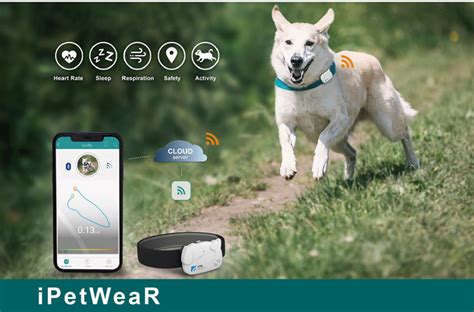Introduction
Dogs are beloved companions that bring joy and unconditional love into our lives. Ensuring their health and well-being is paramount for any pet owner. With advancements in veterinary medicine and technology, dog health monitoring and diagnosis have become more accessible and comprehensive than ever before. This article explores the latest trends and innovations in canine health monitoring and diagnosis, empowering pet owners to make informed decisions about their furry friends’ well-being.

The Importance of Dog Health Monitoring
Regular veterinary checkups and health screenings are essential for early detection and prevention of potential health issues in dogs. By monitoring their physical condition, behavior, and vital signs, pet owners can identify subtle changes that may indicate underlying health concerns. Early diagnosis and intervention can significantly improve the prognosis and treatment outcomes for dogs, reducing discomfort and extending their lifespan.
According to the American Veterinary Medical Association (AVMA), approximately 45% of dogs over the age of 10 have at least one chronic condition, such as arthritis, heart disease, or kidney disease. By proactively monitoring their health, pet owners can catch these conditions early on, before they become more severe and impact their dog’s quality of life.
Innovative Technologies for Dog Health Monitoring
The advent of wearable technology has revolutionized the way we monitor our own health, and now, similar advancements are being made for our canine companions. Smart collars and activity trackers can collect valuable data on a dog’s activity levels, sleep patterns, and heart rate, providing insights into their overall health and well-being.
For instance, the FitBark GPS dog collar tracks a dog’s activity, sleep, and location, sending notifications to the owner’s smartphone. This data can help pet owners identify any changes in their dog’s behavior that may indicate a health issue, such as decreased activity or a change in sleep patterns.
Remote monitoring devices, such as the PetPace Collar, can track vital signs like heart rate, respiratory rate, temperature, and activity levels. These devices transmit real-time data to a veterinarian or pet owner’s smartphone, enabling early detection of potential health issues and prompt intervention.
Advanced Diagnostic Techniques
In addition to monitoring, advanced diagnostic techniques play a crucial role in accuratel diagnosing and treating canine health conditions. These techniques include:
- Blood Tests: Bloodwork can provide valuable insights into a dog’s overall health and identify abnormalities in organ function, inflammation, and blood cell counts.
- Imaging Techniques: X-rays, ultrasound, and MRI scans can visualize internal organs and structures, aiding in the diagnosis of a wide range of conditions, from bone fractures to soft tissue injuries.
- Biopsy: A biopsy involves removing a small tissue sample for microscopic examination, providing a definitive diagnosis of many diseases and conditions.
Common Health Conditions in Dogs
Some of the most common health conditions in dogs include:
- Arthritis: Arthritis is a degenerative joint disease that can cause pain, stiffness, and mobility issues.
- Heart Disease: Heart disease is a leading cause of death in dogs, particularly senior dogs. Symptoms can include coughing, lethargy, and difficulty breathing.
- Kidney Disease: Kidney disease can lead to a variety of symptoms, including increased thirst and urination, vomiting, and weight loss.
- Cancer: Cancer is a common cause of death in dogs, with various types of cancer affecting different breeds and ages.
- Skin Allergies: Skin allergies are a common cause of itching and scratching in dogs.
Pain Points and Motivations
Pet owners are increasingly seeking ways to proactively manage their dog’s health and well-being. They are motivated by a desire to:
- Provide the best possible care for their beloved companions
- Detect health issues early on, before they become severe
- Reduce discomfort and improve their dog’s quality of life
- Extend their dog’s lifespan
Common Mistakes to Avoid
When it comes to dog health monitoring and diagnosis, there are some common mistakes to avoid:
- Ignoring Subtle Changes: Pet owners should be attentive to even the smallest changes in their dog’s behavior, physical condition, or vital signs. Ignoring these changes can delay diagnosis and treatment.
- Delaying Veterinary Care: If you suspect your dog may have a health issue, it is important to schedule a veterinary appointment promptly. Delaying care can worsen the condition and make treatment more difficult.
- Self-Diagnosing: It is never advisable to diagnose your dog’s health condition on your own. Always consult with a qualified veterinarian for an accurate diagnosis and appropriate treatment plan.
Highlights and Standing Out
In the competitive landscape of dog health monitoring and diagnosis, it is essential to stand out and differentiate your offerings. Here are some highlights to consider:
- Comprehensive Monitoring: Offer a comprehensive suite of monitoring services that cover a wide range of health parameters, from activity levels to vital signs.
- Veterinarian Partnerships: Collaborate with veterinarians to provide seamless integration between monitoring data and veterinary care.
- User-Friendly Interface: Design user-friendly apps and software that make it easy for pet owners to track and interpret their dog’s health data.
- Personalized Recommendations: Provide personalized recommendations and insights to pet owners based on their dog’s individual health needs.
Conclusion
Dog health monitoring and diagnosis have come a long way in recent years, with advancements in wearable technology, diagnostic techniques, and veterinary expertise. By embracing these innovations, pet owners can proactively monitor their dog’s health, detect health issues early on, and provide the best possible care for their furry friends. As we progress towards 2025 and beyond, we can expect even more exciting developments in this field, empowering pet owners to become more involved in their dog’s health and well-being.





















